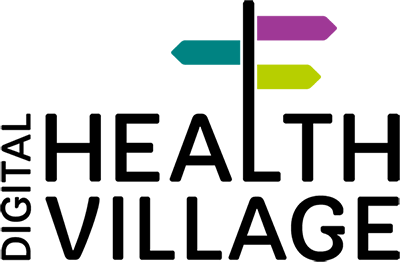Impact assessment of digital services helps allocate resources efficiently
There is a growing need to assess the effectiveness and cost-effectiveness of health services. This need is influenced by the ageing population and other demographic changes, different life situations that increase the need for services, digitalisation and other changes in how services are organised.
Healthcare aims to maintain and provide health with limited resources. For this reason, resources must be allocated so that the desired effects are achieved in the most cost-effective way. From the standpoint of public health, the aim is to provide cost-effective healthcare for the whole population, while considering the specific needs of different population groups and individuals.
Tonsillitis digital care pathway reduced the working hours of doctors
The tonsillitis digital care pathway at HUS is a great example of a cost-effective digital care pathway, in which the doctor spends less time per patient compared to the traditional outpatient clinic model or remote consultation model. This was revealed in a study that compared the costs and required human resources of different care pathways for tonsillitis patients at HUS Outpatient Clinic for Ear, Nose and Throat Diseases.
The doctors in this care pathway spent an average of 19 minutes and 52 seconds per patient. The doctors in the remote consultation model spent an average of 30 minutes and 17 seconds and in the traditional outpatient clinic model an average of 22 minutes and 1 second.
In addition to reduced working hours, the digital care pathway was the most cost-effective model for the outpatient clinic, and the patient fees were lower than in the outpatient clinic and remote consultation models.
Impact assessment supports decision makers in their decisions
The aim of developing healthcare include reducing the differences in people's wellbeing and health, improving equality and accessibility of services, and restraining the increase of costs.
Assessing cost-effectiveness helps evaluate how different contributions influence the welfare and health impacts in different population groups and geographical areas. Impact assessment provides research-based information on the effectiveness and cost-effectiveness of healthcare services, as well as on the promotion of health and wellbeing. The assessment aims to support management and decision-making that is based on effectiveness.
Health Village’s services are competitive
Health Village’s services are competitive with other similarservices, because the volume of digital services in production use is high and they have a significant role in the health and wellbeing of customers, for example, when treating patients with long-term illnesses.
Various methods of self-treatment and service usage can free up capacity in the service system significantly. For example, the staff can spend its time working on cases where face-to-face appointments with the patient are important.
At best, digital services makes patient care possible in primary healthcare as a local service even when specialised medical expertise is required. This will enable, for example, online consultation services and, in the future, collaborative digital service pathways between experts from primary healthcare and specialised medical care.
Read more in American Journal of Otolaryngology:
- 10.05.2025 12:10
Watch a video about the impact of Health Village - 05.10.2024 11:45
Neuropsychological online rehabilitation improves service availability and generates savings - 29.01.2024 14:39
Health Village service benefits estimated at hundreds of millions of euros - 02.01.2024 08:00
The impact assessment of Health Village’s digital care pathways indicates: the greatest cost benefit is generated by scalability - 15.11.2023 12:45
Impact assessment of digital services helps allocate resources efficiently - 18.04.2023 15:55
The self-care program supports long-term weight management - 14.02.2023 13:16
Customers are equal co-creators in the Rehabilitation Hub - 20.12.2022 14:45
New digital care pathway helps discontinue post-operative pain medication gradually - 04.11.2022 15:08
Online Therapy for Insomnia at Helsinki University Hospital Proven to Be an Effective Treatment - 30.09.2022 14:24
Wound Navigator Helps Physicians and Nurses Examine Wound Patients - 05.08.2022 14:50
Digital Care Pathways Respond to the Patient’s Thirst for Information - 27.06.2022 11:13
Digital Care Pathway for Coronary Artery Disease Patients Awarded - 03.05.2022 15:21
The First Digital Service Pathway of Social Welfare Has Been Opened to Customers - 11.04.2022 13:51
Health Village is proud to be included as one of the Finnish future hospitals - 11.04.2022 13:04
Digital care pathway supports the parents of children with behavioural problems - 12.02.2021 14:28
Finnish healthcare provider stemming the spread of COVID-19 with data and cloud technology - 04.09.2020 18:29
Health Village at HIMSS & Health 2.0 Sep 7-11 - 01.04.2020 15:44
Health Village’s Coronabot Now Also Available in English - 16.03.2020 18:21
Health Village’s Coronabot Helps to Estimate the Likelihood of a Coronavirus Infection - 29.01.2020 08:00
Digital Care Pathway for Gastric Bypass Patients Benefits the Patients and Brings Significant Savings to Society
